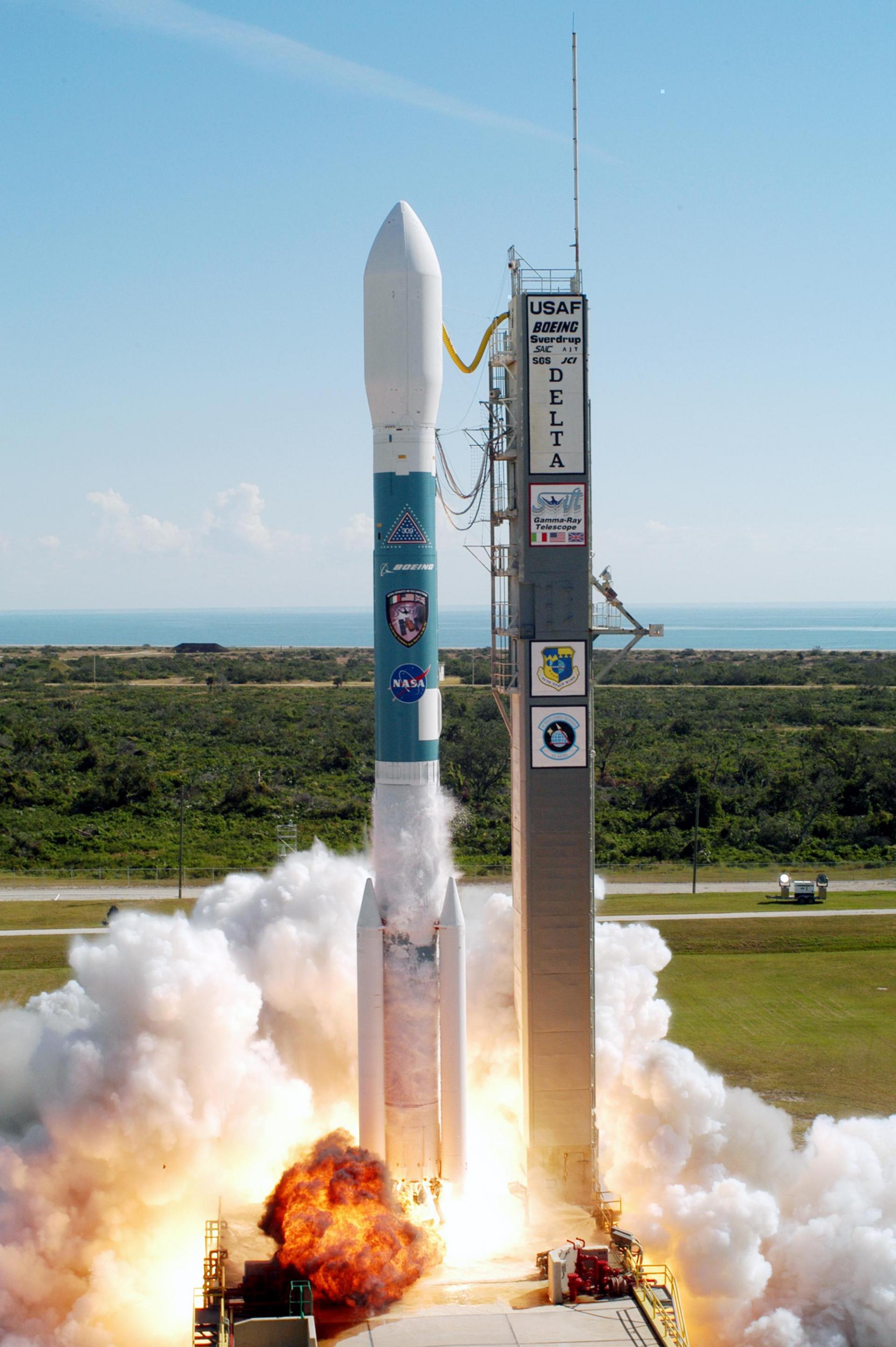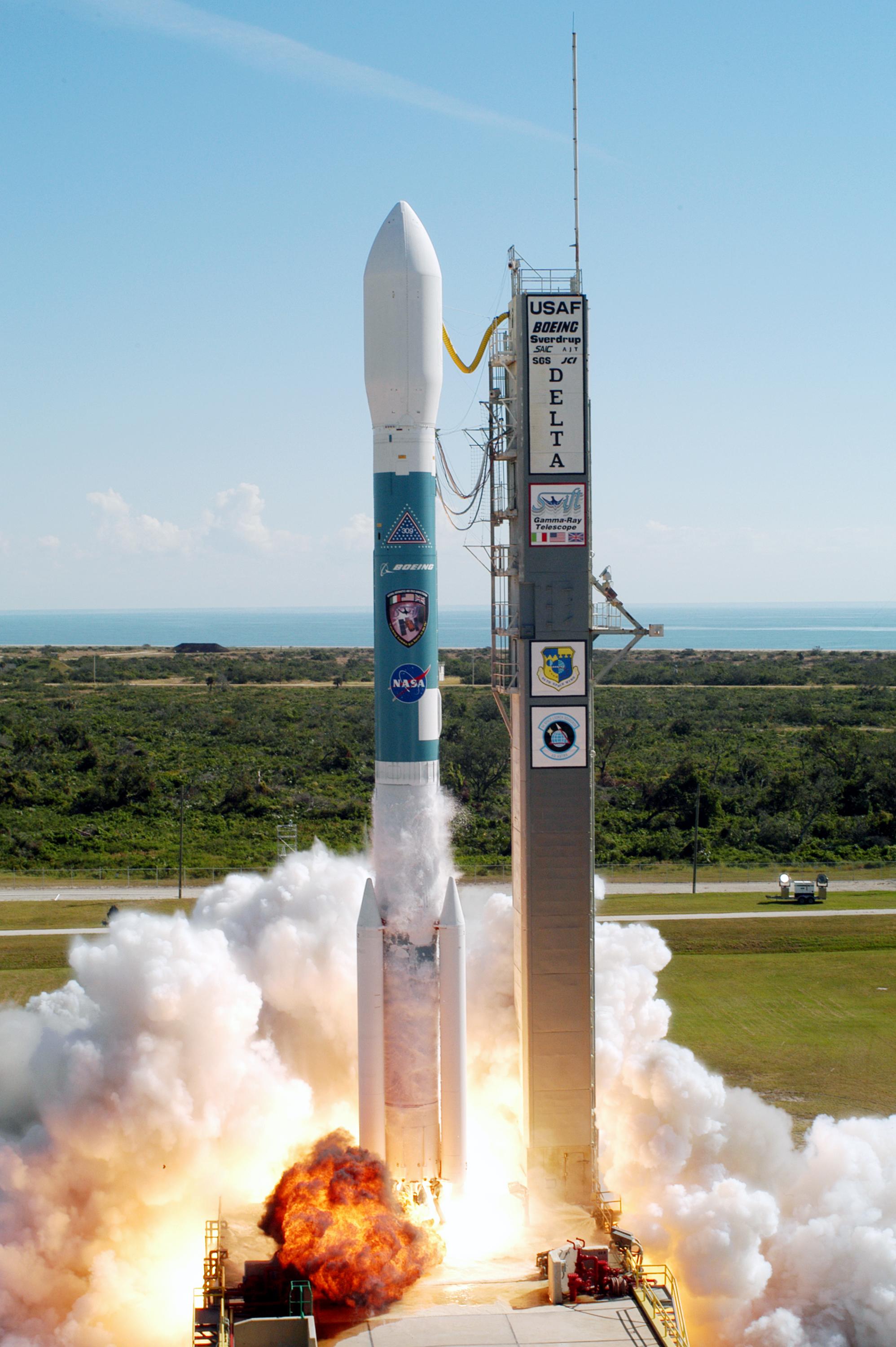
Delta II
In-activeUnited Launch Alliance (ULA)
Nov. 20, 2004
Description
Delta II is an American space launch system developed by McDonnell Douglas, now part of the Delta rocket family operated by United Launch Alliance. With more than 150 missions and a nearly perfect track record, Delta II has established itself as one of the most successful orbital launch systems.
Specifications
-
Stages
2 -
Length
38.9 m -
Diameter
2.44 m -
Fairing Diameter
3.0 m -
Launch Mass
168.0 T -
Thrust
―
Family
-
Name
Delta II -
Family
― -
Variant
7320-10C -
Alias
― -
Full Name
Delta II 7320-10C
Payload Capacity
-
Launch Cost
$51000000 -
Low Earth Orbit
2800.0 kg -
Geostationary Transfer
Orbit
― -
Direct Geostationary
― -
Sun-Synchronous Capacity
1651.0 kg
United Launch Alliance
Commercial
CEO: Tory Bruno
ULA 2006United Launch Alliance (ULA) is a joint venture of Lockheed Martin Space Systems and Boeing Defense, Space & Security. ULA was formed in December 2006 by combining the teams at these companies which provide spacecraft launch services to the government of the United States. ULA launches from both coasts of the US. They launch their Atlas V vehicle from LC-41 in Cape Canaveral and LC-3E at Vandeberg. Their Delta IV launches from LC-37 at Cape Canaveral and LC-6 at Vandenberg.
Delta II 7320-10C | SMAP, FIREBIRD II A, FIREBIRD II B, GRIFEX, ExoCube
United Launch Alliance | United States of AmericaVandenberg SFB, CA, USA
Jan. 31, 2015, 2:22 p.m.
Delta II 7320-10C | OCO-2
United Launch Alliance | United States of AmericaVandenberg SFB, CA, USA
July 2, 2014, 9:56 a.m.
Delta II 7320-10C | WISE
United Launch Alliance | United States of AmericaVandenberg SFB, CA, USA
Dec. 14, 2009, 2:09 p.m.
Delta II 7320-10C | NOAA-19 (NOAA N)
United Launch Alliance | United States of AmericaVandenberg SFB, CA, USA
Feb. 6, 2009, 10:22 a.m.
Delta II | NOAA 18
United Launch Alliance | United States of AmericaVandenberg SFB, CA, USA
May 20, 2005, 10:22 a.m.
Status: Launch Successful
Mission:
NOAA-18, known before launch as NOAA-N, is a weather forecasting satellite run by NOAA. NOAA-N (18) was launched on May 20, 2005, into a sun-synchronous orbit at an altitude of 854 km above the Earth, with an orbital period of 102 minutes. It hosts the AMSU-A, MHS, AVHRR, Space Environment Monitor SEM/2 instrument and High Resolution Infrared Radiation Sounder (HIRS) instruments, as well as the SBUV/2 ozone-monitoring instrument. It is the first NOAA POES satellite to use MHS in place of AMSU-B. NOAA-18 also hosts Cospas-Sarsat payloads.
Sun-Synchronous OrbitDelta II | Swift
United Launch Alliance | United States of AmericaCape Canaveral SFS, FL, USA
Nov. 20, 2004, 5:16 p.m.
Falcon 9
MTG-S1
Launch Complex 39A - Kennedy Space Center, FL, USASecond of EUMETSAT's third generation of weather satellite.
New Shepard
NS-33
West Texas Suborbital Launch Site/ Corn Ranch - Corn Ranch, Van Horn, TX, USANS-33 is the 13th crewed flight for the New Shepard program and the 33rd in its history.
Falcon 9
Starlink Group 15-7
Space Launch Complex 4E - Vandenberg SFB, CA, USAA batch of 26 satellites for the Starlink mega-constellation - SpaceX's project for space-based Internet communication system.
H-IIA
GOSAT-GW (Ibuki GW)
Yoshinobu Launch Complex LP-1 - Tanegashima Space Center, JapanGOSAT-GW (Greenhouse Gases Observing Satellite Greenhouse gases and Water cycle), also known as Ibuki GW and formerly known as GOSAT 3, is JAXA's nex…
Electron
Symphony In The Stars
Rocket Lab Launch Complex 1B - Rocket Lab Launch Complex 1, Mahia Peninsula, New Zealand'Symphony In The Stars' is the first of two dedicated missions on Electron to deploy a single spacecraft to a 650km circular Earth orbit for a confid…


